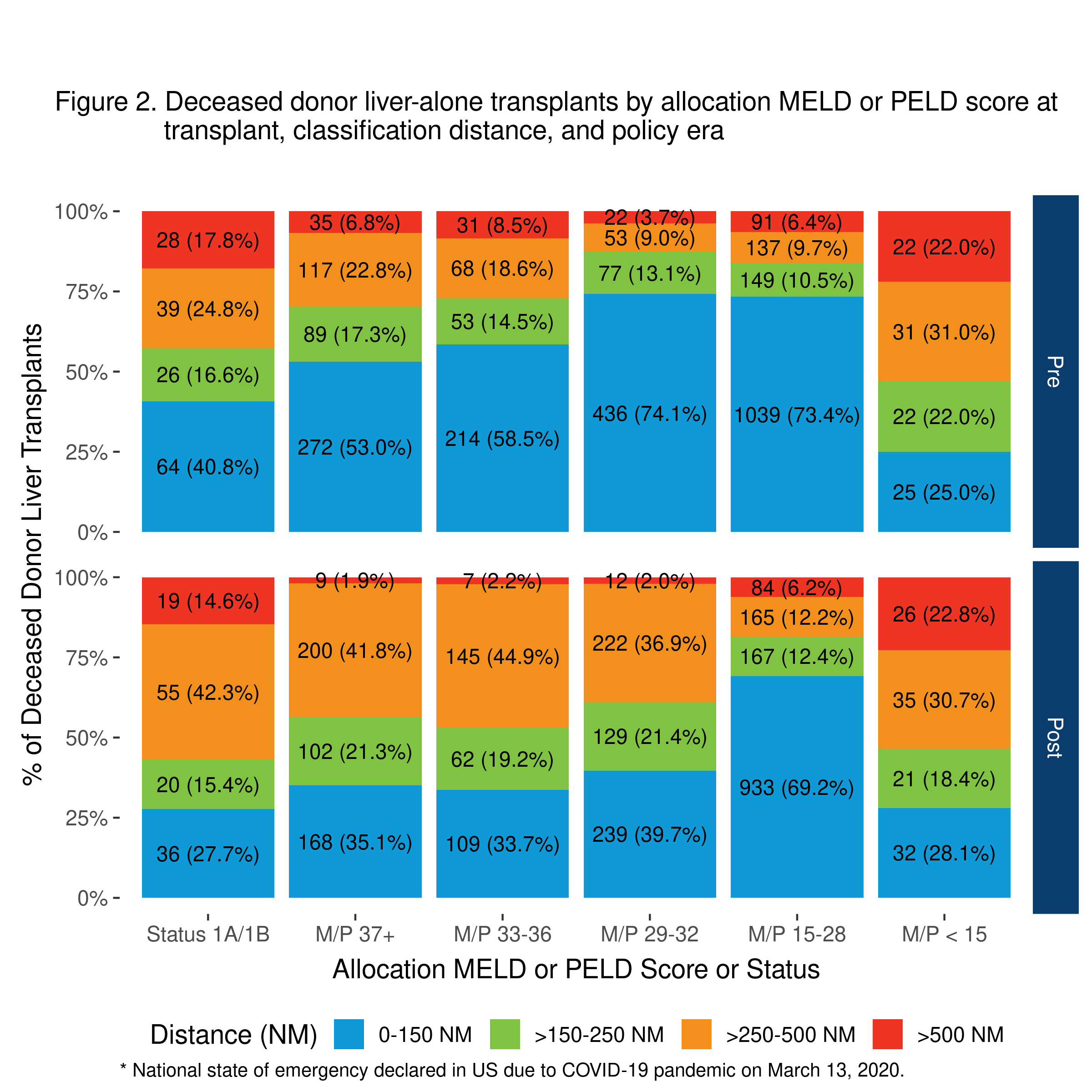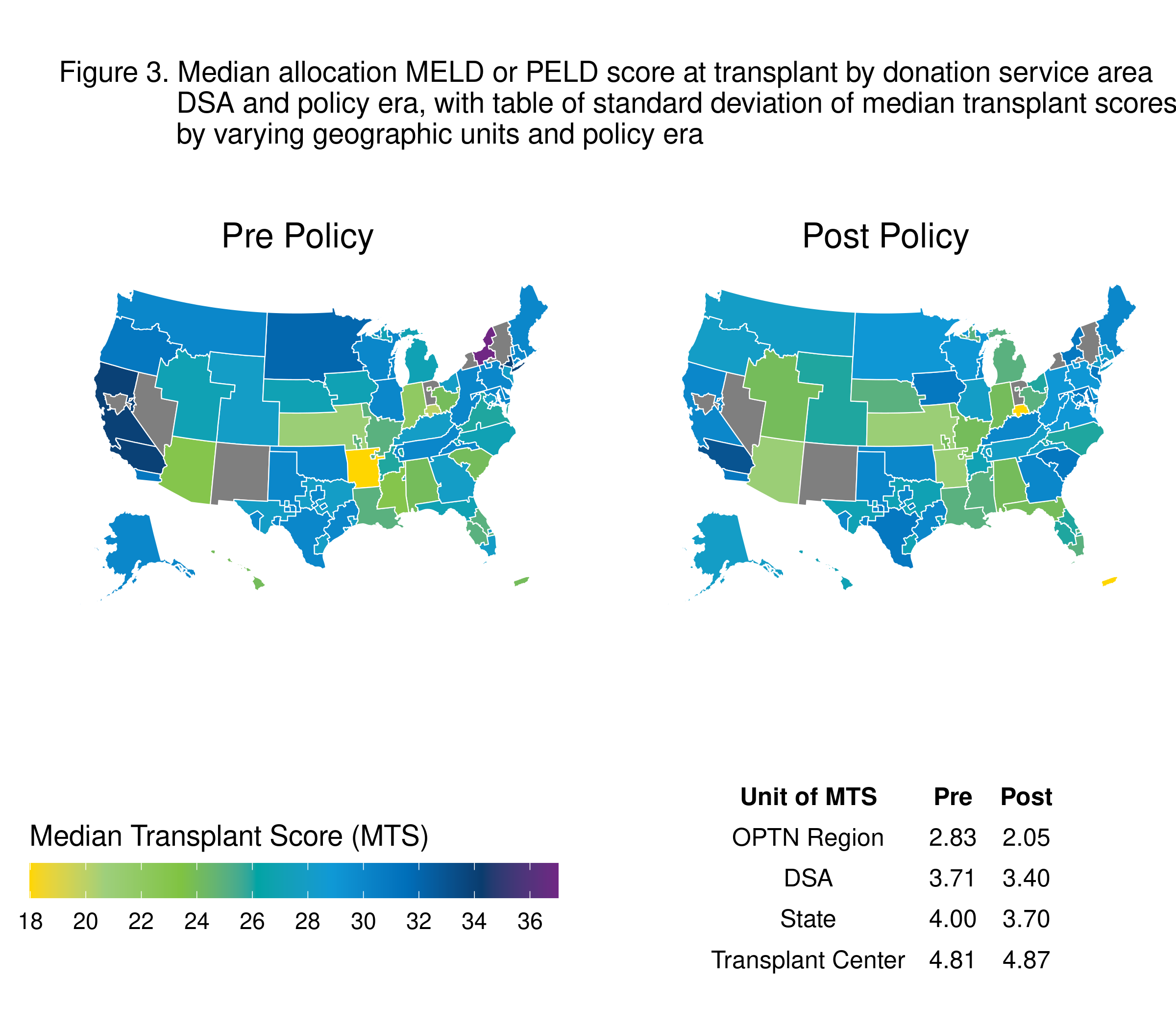Early Review of Liver Acuity Circles Allocation
1UNOS, Richmond, VA, 2Mayo Clinic, Rochester, MN, 3UCHealth, Aurora, CO, 4BSWHealth, Dallas, TX
Meeting: 2021 American Transplant Congress
Abstract number: 696
Keywords: Allocation, Liver, Liver transplantation, Resource utilization
Topic: Clinical Science » Public Policy » Non-Organ Specific: Public Policy & Allocation
Session Information
Session Name: Non-Organ Specific: Public Policy & Allocation
Session Type: Poster Abstract
Session Date & Time: None. Available on demand.
Location: Virtual
*Purpose: Acuity circles (AC) allocation was implemented on February 4, 2020, followed shortly by the declaration of national emergency for COVID-19. The goal of this policy was to broaden distribution of livers, particularly for highly medically urgent candidates.
*Methods: OPTN liver waitlist, transplant, and donor data were used. Cohorts of deceased donor liver-alone transplants for the pre- (2/5 – 7/2/2019) and post-eras (2/4 – 6/30/2020), as well as cohorts of liver waitlist registrations added, liver-alone waitlist registrations removed due to death or too sick to transplant, and deceased liver donors during 2/5 – 8/6/2019 (pre-policy) and 2/4 – 8/4/2020 (post-policy) were assessed.
*Results: Similar volumes of deceased liver donors were recovered pre- and post-policy (4545 vs. 4564). While 375 fewer new registrations were added to the liver waitlist post-policy largely due to COVID-19, similar numbers of registration removals occurred (1093 pre- vs. 1020 post-policy) (Figure 1). There were fewer transplants overall post-policy (2997 vs. 3140 pre), with similar proportions of recipients with MELD or PELD scores of 29 and higher (51.7% pre- vs. 51.2% post-policy). However, these most medically urgent recipients received livers from farther away post-policy (Figure 2). The variation in median allocation score at transplant, as a measure of disparity across areas, has also decreased by most geographic units (Figure 3).
*Conclusions: It can already be seen that livers are being more broadly distributed for those with greater medical urgency, and geographic disparities are decreasing. However, the confounding effects of COVID-19 cannot be parsed out from potential policy effects, and continued data accumulation and monitoring of the system by the OPTN Liver Committee will be needed to determine the true effects of this policy change.
To cite this abstract in AMA style:
Noreen S, Heimbach J, Pomposelli J, Cafarella M, Trotter J. Early Review of Liver Acuity Circles Allocation [abstract]. Am J Transplant. 2021; 21 (suppl 3). https://atcmeetingabstracts.com/abstract/early-review-of-liver-acuity-circles-allocation/. Accessed December 28, 2025.« Back to 2021 American Transplant Congress



